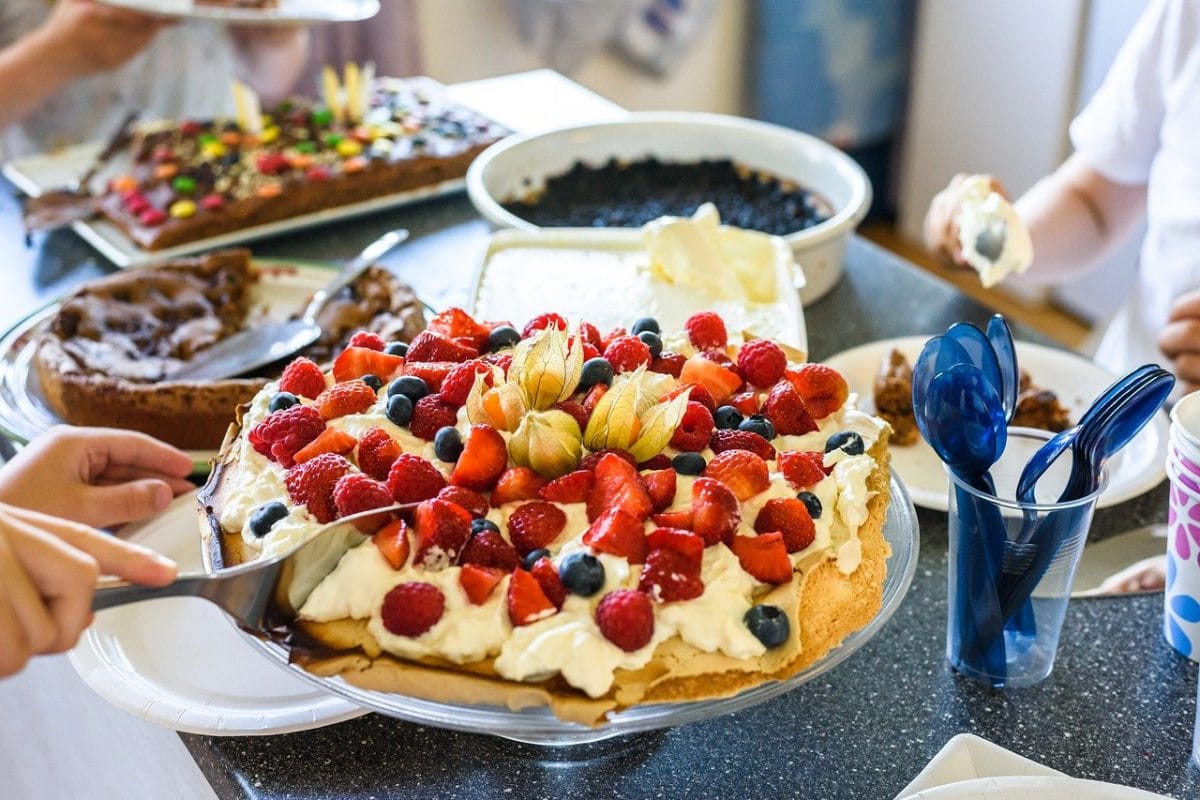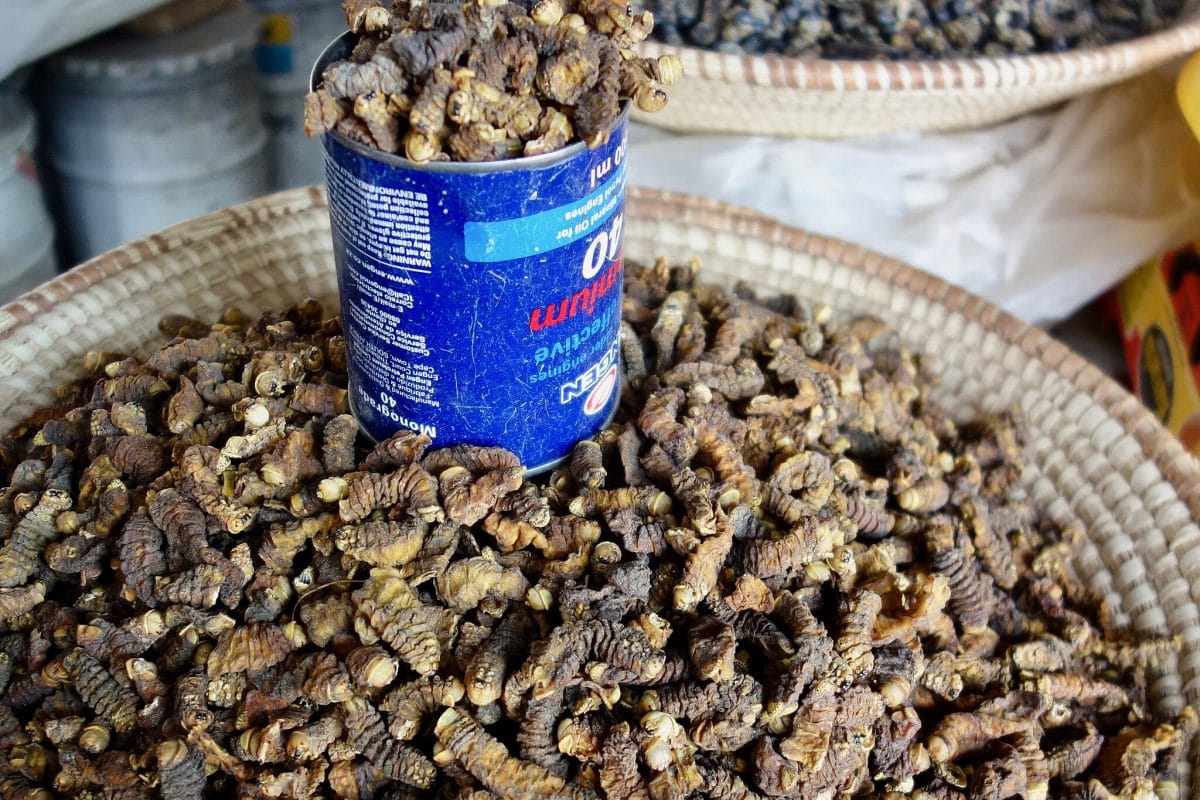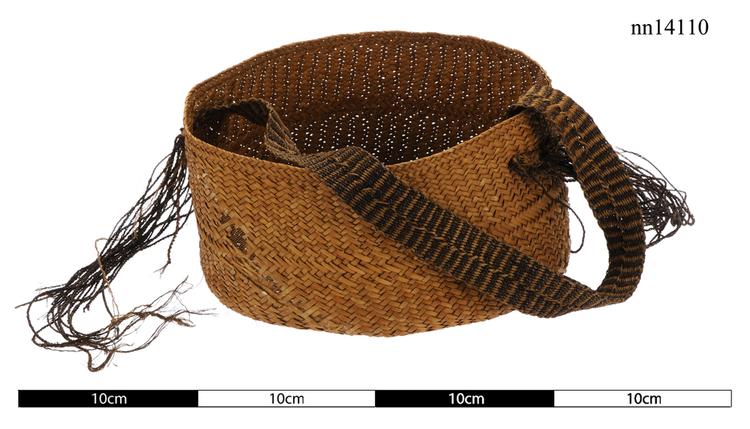Polish Wigilia
The traditional Polish feast known as the Wigilia is held on Christmas Eve, which is common across Europe. The dinner includes twelve dishes and excludes meat.
A whole carp is therefore the main event, which is commonly purchased alive three days before the meal and kept in the bathtub overnight. It is then cooked and served on the day. It is believed the carp scales bring luck during the festive period, and people will keep them in wallets and purses all year round.
The other dishes will vary regionally, and from family to family. Given the feast is usually shared in large groups, they will often include ample sharing dishes like pierogi filled with cheese and potatoes, as well mushrooms and cabbage. Another tradition is to make an extra place-setting for a mystery guest, in the spirit of celebrating hospitality.
The dining table is often be dressed with traditional Polish decorations, like this one which is used at Easter and Christmas.

Japanese KFC
In the 1970s and 80s, a consumer fast-food boom in Japan prompted one of the more unusual Christmas eating traditions.
Only 1% of the Japanese population identify as Christian, so there was a void of Christmas tradition in Japan. Some attribute this more contemporary habit to KFC Japan’s first CEO, who falsely marketed KFC as an American festive tradition. Nowadays, KFC is deliberately marketed in colourful festive television advertisements, tapping into more familiar Japanese cultural norms of sharing food amongst family and community. The family KFC bucket, or ‘party barrel’, has thus become the popular Christmas choice, with KFC Japan pulling in 6.9 billion yen (roughly £35 million) from December 20 to 25 in 2018.
Japan’s long tradition of sharing food, communal eating and ceremonial dining perhaps made the KFC bucket a natural match with Japanese culture. Many of the Japanese culinary objects at the Horniman indicate this history of collective feasting, such as these sweetmeat trays.

sweetmeat trays (trays (food service))
Anthropology
Deep fried chicken in Japan also has a much longer history than KFC can claim. Kentucky Fried Chicken draws many similarities with the Japanese cooking technique Karaage, which dates back to 17th Century Japanese culinary tradition. While the KFC Christmas is a novelty, the Japanese penchant for fried chicken runs deeper than an opportunist advertising campaign!

Swedish Jul
Also taking place on Christmas Eve, the Swedish celebrate with a lavish ‘Julbord’ feast showcasing some familiar staples of Swedish cuisine.
This includes a Christmas ham, pickled herring, and of course – meatballs! These dishes are not necessarily unique to Christmas and are commonly repeated at Swedish celebrations for Midsommer and Easter. However, one dish that is specially prepared at Christmas is the Risgrynsgröt, a festive rice or barley porridge garnished with almonds dating back to the 16th Century.

figure (art)
Anthropology
In fact, the roots of ‘midwinter’ celebrations in Sweden pre-date Christianity entirely and can be traced back to pagan feasts. Although Jul now follows the Christian calendar, the traditions are deep-rooted. Light is a central theme in Scandinavian rituals, marking their yearly cycles with celebrations. It is therefore tradition to decorate the table with candles and Tomte figurines – small mythical bearded men dressed in red.
At the Horniman, there is a full display on the Swedish Christmas table, featuring objects from our collection!

candle holder (lighting devices)
Anthropology
Sunshine Christmas in Australia
While a Christmas day in the UK might often be spent in a cosy food coma on the sofa, for those who celebrate, an Australian Christmas falls right in the middle of summer.
With hot temperatures and the sun shining, a roast dinner doesn’t quite fit the bill. Meals will vary, but the running theme is of alfresco dining, barbeques, and lighter eating. A common dessert is the pavlova, a fluffy and luxurious meringue topped with single cream and summer fruits. This is a far cry from the dense and rich Christmas puddings in the UK.
A ‘pav’, as it is often colloquially referred, is claimed by Australian Chef Bert Sachse who named the dish after popular Russian ballerina Anna Pavlova in 1935. Light and delicate, much like the ballerina.

Christmas Rice in Nigeria
Nigeria has the biggest Christian population on the African continent at around 50%, so Christmas traditions are an important part of the history and culture.
An extremely diverse nation, there is over two hundred and fifty ethnic groups. While traditions vary, no Christmas feast is complete without Christmas rice. Jollof rice is perhaps the most synonymous. This colourful and spicy rice dish is popular not just in Nigeria, but across West Africa as the ultimate celebration food. A ‘Jollof Christmas’ has also been exported across the world, with West African diasporas in the UK also making jollof over the festive period.

The rice offerings are not limited to jollof only, with Nigerian fried rice and ofada rice often available at any given feast. Whilst the rice dish is a staple, other traditional Christmas treats include a variety of spicy savoury soups such as pepper, egusi and fishermans soup. Nigerians will also often complete their Christmas feast with a roast Turkey, familiar to many, but with a different take. Nigerians flavour the bird with a rub of zingy suya spices, blending ground peanut, ginger, garlic, chilli and spices.

cooking container (food processing & storage); lid (containers)
Anthropology
Mopane Worms in Southern African
In some sub-Saharan countries such as Botswana, Namibia and South Africa, mopane worms are a delicacy often eaten at Christmas.
They are caterpillars of the emperor moth, which grow on mopane trees common across the dryer landscapes of Southern African. The caterpillars are harvested in late November, which is where their association to Christmas arises.
The mopane worms have a crunchy texture and are usually deep fried or cooked in rich sauces of tomato, onion, garlic and spices. While they may not look too appetising, they are an amazing source of protein and contain plenty of iron and zinc. Perhaps a healthier luxury for Christmas dinner!
Everybody has different Christmas traditions, from Fiji to Forest Hill. What are yours?







